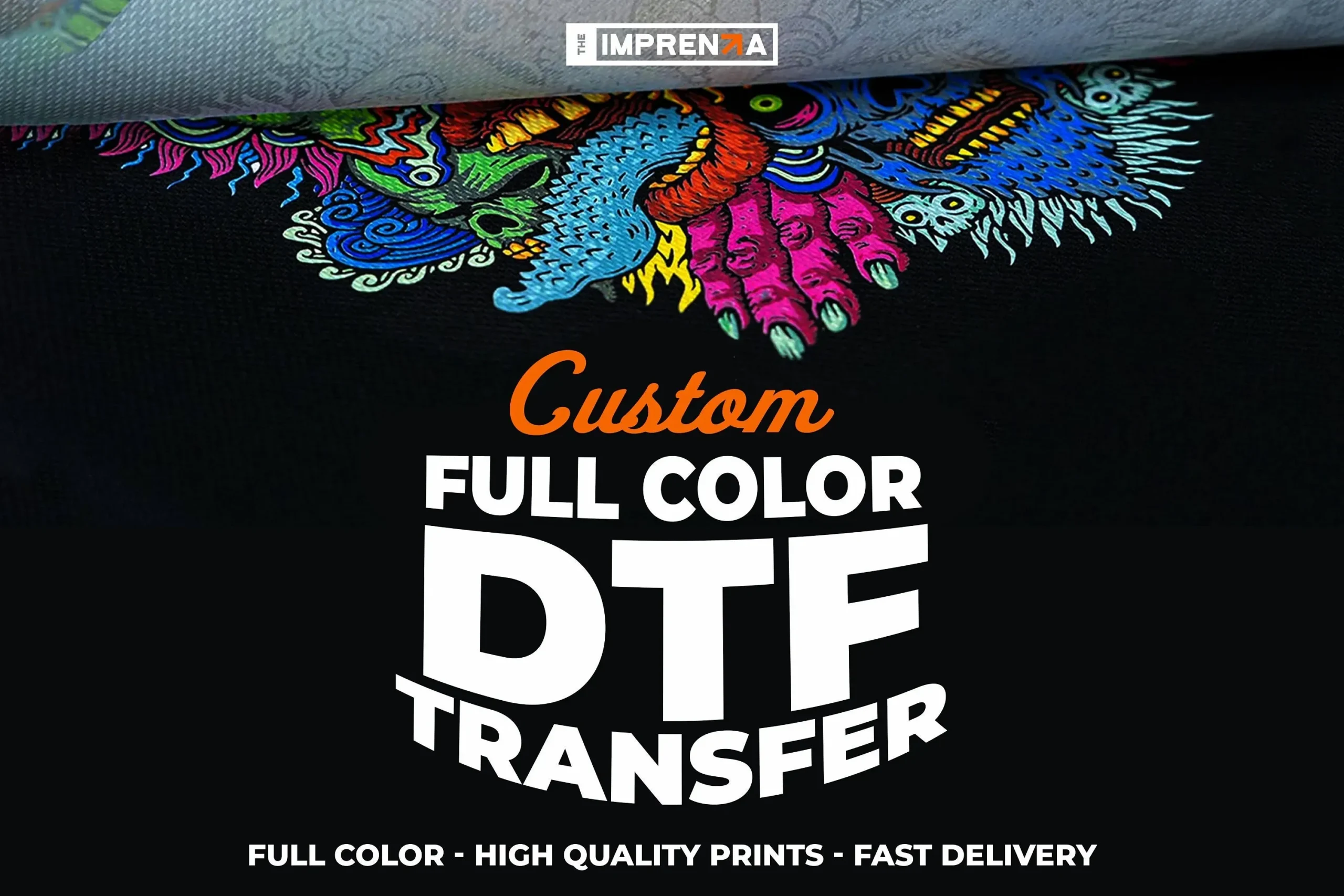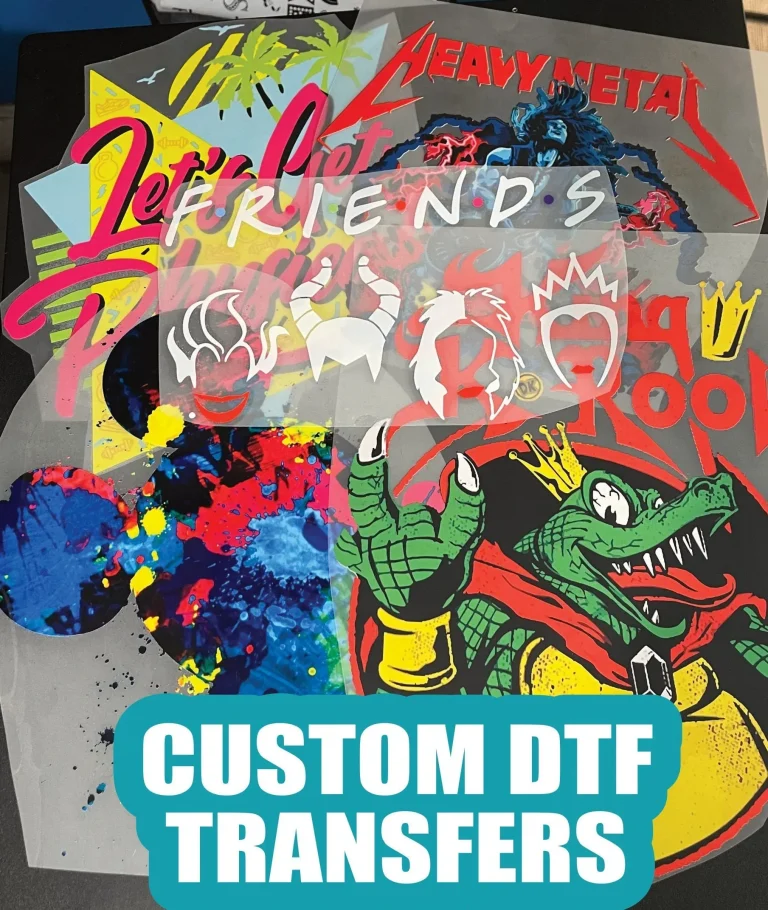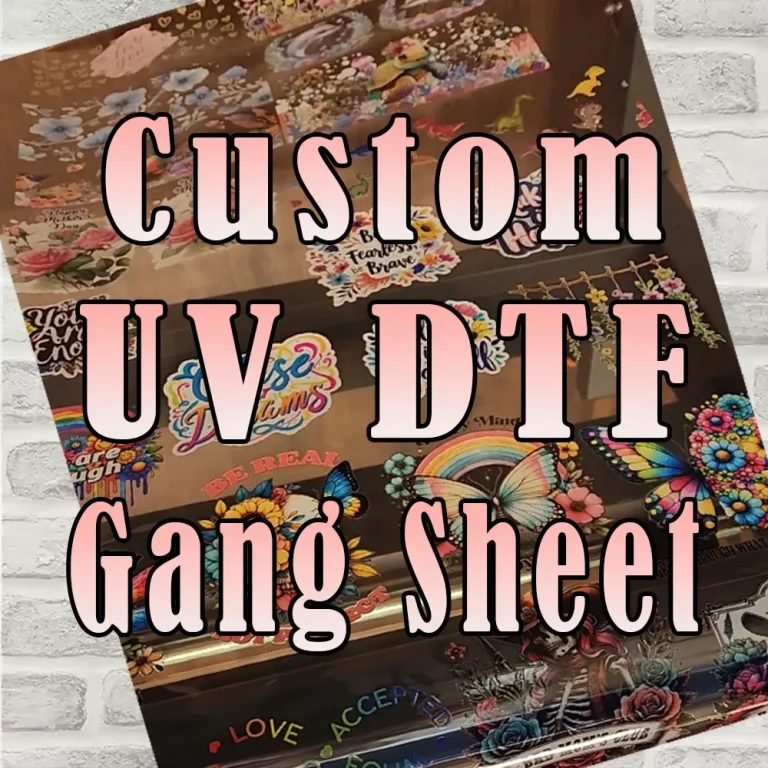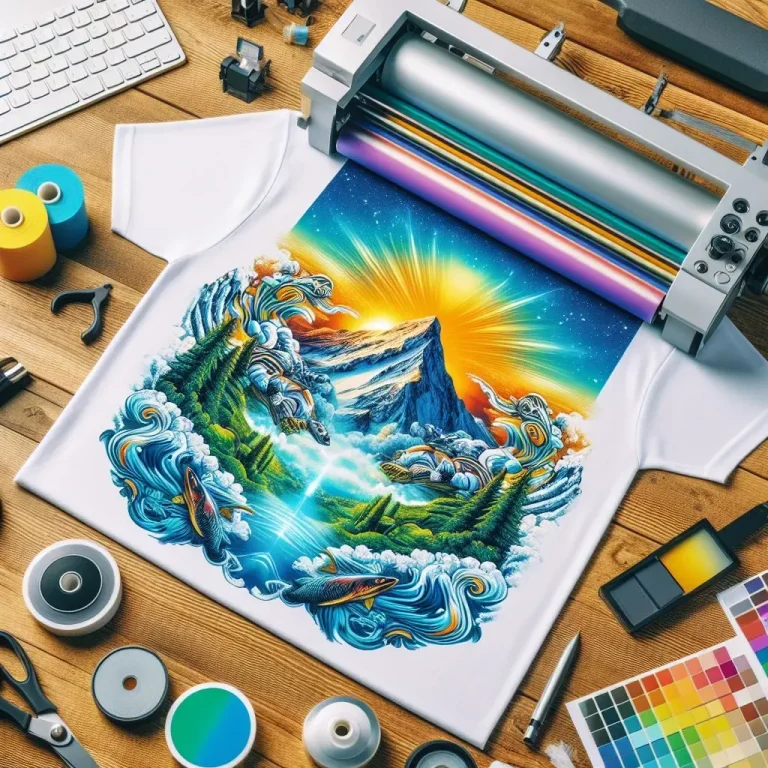DTF Transfers: Why They’re Dominating the Custom Print Market
DTF transfers, short for Direct-to-Film transfers, are revolutionizing the custom print market with their ability to deliver vibrant designs quickly and efficiently. This cutting-edge DTF printing technology offers businesses a unique solution to create custom apparel that stands out in today’s competitive landscape. With its economical advantages and streamlined process, DTF transfers enable entrepreneurs and established businesses alike to fulfill customer demands for personalized prints on various fabrics. As the print on demand sector grows, the popularity of DTF technology expands alongside it, catering to the unique styles and preferences of consumers. In this article, we will explore the unparalleled benefits and advancements that make DTF transfers a game-changer in the realm of custom printing.
Often referred to as direct-to-film printing, DTF transfers encompass a groundbreaking approach to textile decoration that is changing the way businesses create custom designs. This innovative method allows for high-quality image transfer onto fabrics, perfect for producing custom apparel in an efficient manner. As the direct-to-film technique gains traction, it becomes evident how important it is for companies looking to thrive in the custom print industry. By eliminating extensive setup procedures required in traditional printing methods, this technology accommodates the rapid production of bespoke designs, tapping into the growing demand for personalized products across various consumer markets. With DTF printing on the rise, understanding this transformative process is crucial for anyone involved in the custom print landscape.
Understanding DTF Transfers: A Revolutionary Printing Method
DTF transfers, or Direct-to-Film transfers, represent a notable advancement in the custom print market, offering vibrant color reproduction and a wider design range than many traditional methods. By utilizing a special film, businesses can transfer intricate designs onto various fabrics with ease, achieving impressive results without the need for extensive setup. This method not only ensures excellent adhesion to both light and dark materials but also allows for fast production times, making it a favorable choice for companies looking to stay competitive in the fast-paced world of custom apparel.
The unique process of DTF printing involves printing the desired design onto a film that is then heat-pressed onto the fabric. This innovation merges the best features of traditional screen printing and Direct-to-Garment techniques. Since it accommodates urgent requests for custom pieces and is accessible to small businesses with limited resources, DTF transfers have gained widespread popularity among crafters, entrepreneurs, and established firms alike. As these businesses embrace this technology, they not only enhance their product offerings but also tap into a growing market that demands customization in every fabric.
The Growing Applicability of DTF Printing in Custom Apparel
DTF printing technology has showcased impressive versatility, enabling the production of complex graphics and vibrant designs that appeal to a wide range of customers. Whether it’s apparel for promotional events, personalized gifts, or unique fashion statements, DTF transfers provide businesses the flexibility to cater to diverse market needs. This adaptability significantly enhances the potential for creative designs, making it a valuable asset in the custom print industry.
Additionally, as consumer trends increasingly lean towards personalization and uniqueness in fashion, DTF transfers meet these demands efficiently. Print-on-demand services are becoming commonplace, allowing customers to order customized apparel on a per-request basis. Businesses leveraging DTF technology are ideally positioned to capitalize on this shift, fulfilling orders quickly and without the overhead required by traditional print methods, thus streamlining their production processes.
Cost Efficiency of DTF Transfers on Small Businesses
One of the standout advantages of DTF printing technology is its cost-effectiveness. Unlike traditional printing techniques that often require significant financial investment for equipment and materials, DTF transfers minimize startup costs, making it attainable for small businesses to enter the custom apparel market. With lower overhead costs, these businesses can offer competitive pricing for their products, providing them with a sustainable edge.
Moreover, the efficiency of DTF transfers not only reduces material waste but also allows for quicker production cycles. Small businesses can respond to customer demands swiftly, offering short runs of customized items without the burden of excessive setup times or wasted materials. This optimal utilization of resources plays a significant role in improving profit margins, enabling small businesses to thrive even in a saturated market.
Technological Innovations Driving DTF Market Growth
The rapid evolution of DTF printing technology has been pivotal in establishing its presence within the custom print market. Innovative advancements in ink formulations and heat transfer techniques have enhanced the quality and durability of prints produced using DTF transfers. These improvements lead to better washability and longevity, two critical factors consumers consider when choosing custom apparel.
In addition to enhanced print quality, these technological innovations have made the DTF printing process more user-friendly. As businesses adopt DTF technology, entrepreneurs—regardless of their design experience—can produce professional-grade prints, removing barriers to entry in the custom apparel space. This accessibility fuels industry growth and encourages an influx of new firms looking to make their mark in the competitive landscape of print-on-demand services.
Consumer Trends Elevating Demand for DTF Transfers
As technology advances and consumer preferences evolve, the demand for unique and customized apparel continues to rise. DTF transfers resonate well in this landscape, allowing businesses to offer bespoke products tailored to individual tastes and preferences. As retailers adapt to meet this growing consumer demand, DTF printing provides a viable solution capable of fulfilling rapid requests with exceptional quality.
Interestingly, the online shopping landscape has been transformed by consumers’ desires for personalized products, further fueling the demand for DTF transfers. Businesses that harness the power of DTF technology can offer quick turnarounds on custom orders, enhancing customer satisfaction and loyalty. This trend illustrates how vital it is for companies in the custom print market to innovate and adapt to consumer expectations spanning personalization, diversity, and convenience.
The Future of DTF Transfers and the Custom Printing Landscape
The future outlook for DTF transfers within the custom print market appears robust. An increase in accessibility and the continuous development of printing technology are set to drive further adoption among businesses keen on leveraging this method to enhance their product offerings. As entrepreneur-led startups flourish alongside established companies seeking to diversify their services, the relevance of DTF technology will only grow.
Moreover, industry experts predict that as sustainability becomes a growing concern for consumers and businesses alike, eco-friendly features associated with DTF transfers will capture attention. The minimal waste generated during the DTF process positions it as an environmentally sound option in the custom print market. As such, manufacturers and businesses dedicated to sustainable practices will likely gravitate towards DTF technology, reinforcing its status as a preferred choice for future custom apparel printing solutions.
Frequently Asked Questions
What are the benefits of using DTF transfers in the custom print market?
DTF transfers offer several benefits in the custom print market, including cost-effectiveness, versatility, and high-quality results. This printing technology allows businesses to produce intricate designs on various fabrics quickly, appealing to both light and dark garments. Additionally, DTF printing requires minimal setup, making it accessible for small to medium-sized enterprises looking to enter the custom apparel space.
How does DTF printing technology compare to traditional screen printing?
DTF printing technology surpasses traditional screen printing in several aspects. It involves lower upfront costs and minimizes setup time, enabling businesses to produce customized items more efficiently. Additionally, DTF transfers deliver vibrant colors and detailed designs, which adhere well to a range of fabrics, whereas screen printing may struggle with intricate designs and color vibrancy on different materials.
Can DTF transfers be used for both light and dark garments?
Yes, DTF transfers are highly versatile and can be applied to both light and dark garments. The technology allows for vibrant prints regardless of fabric color, making it an excellent choice for custom apparel that requires diverse printing capabilities.
What advancements in DTF technology contribute to its growing popularity?
Recent advancements in DTF technology include improved inks and films that enhance adhesion and durability of prints. These technological improvements result in better washability and longevity of DTF transfers, meeting consumer expectations for quality on custom apparel and contributing to its rising popularity in the custom print market.
Is DTF printing an eco-friendly option for custom apparel production?
Yes, DTF printing is considered a more eco-friendly option compared to traditional printing methods. The process generates minimal waste, making it a sustainable choice for businesses focused on reducing their environmental impact while producing high-quality custom designs.
How has consumer demand influenced the adoption of DTF transfers among businesses?
Growing consumer demand for unique and personalized clothing has significantly influenced the adoption of DTF transfers. As customers seek quick and affordable custom apparel options, businesses are increasingly turning to DTF technology to fulfill these expectations, positioning themselves competitively in the expanding custom print market.
| Key Points | Description |
|---|---|
| Introduction to DTF Transfers | DTF transfers are revolutionizing the custom print market due to their versatility, efficiency, and high-quality output. |
| What Are DTF Transfers? | A method where designs are printed onto a special film and then applied to fabrics using heat, offering vibrant colors and intricate designs. |
| Market Growth and Popularity | DTF transfers are growing in popularity due to their versatility, accessibility, and projected market growth. |
| Advantages Over Other Methods | DTF printing is cost-effective, efficient, and offers eco-friendly options compared to traditional methods. |
| Technological Improvements | Advancements in inks and films have improved durability and made the process user-friendly for all skill levels. |
| Industry Insights | Businesses see benefits from DTF, including increased production and lower labor costs, with integration into existing printing operations. |
| Consumer Demand | Increasing demand for unique, personalized apparel drives adoption of DTF transfers in businesses. |
Summary
DTF transfers represent a significant evolution in the custom print market. As this innovative printing method advances, it is becoming the choice of businesses looking to offer high-quality, personalized products efficiently and affordably. The combination of technological improvements, growing consumer demand, and the accessibility of DTF equipment is reshaping the landscape of custom printing. The future of custom apparel is increasingly leaning towards DTF solutions, making them an essential consideration for any entrepreneur or established business in the industry.







